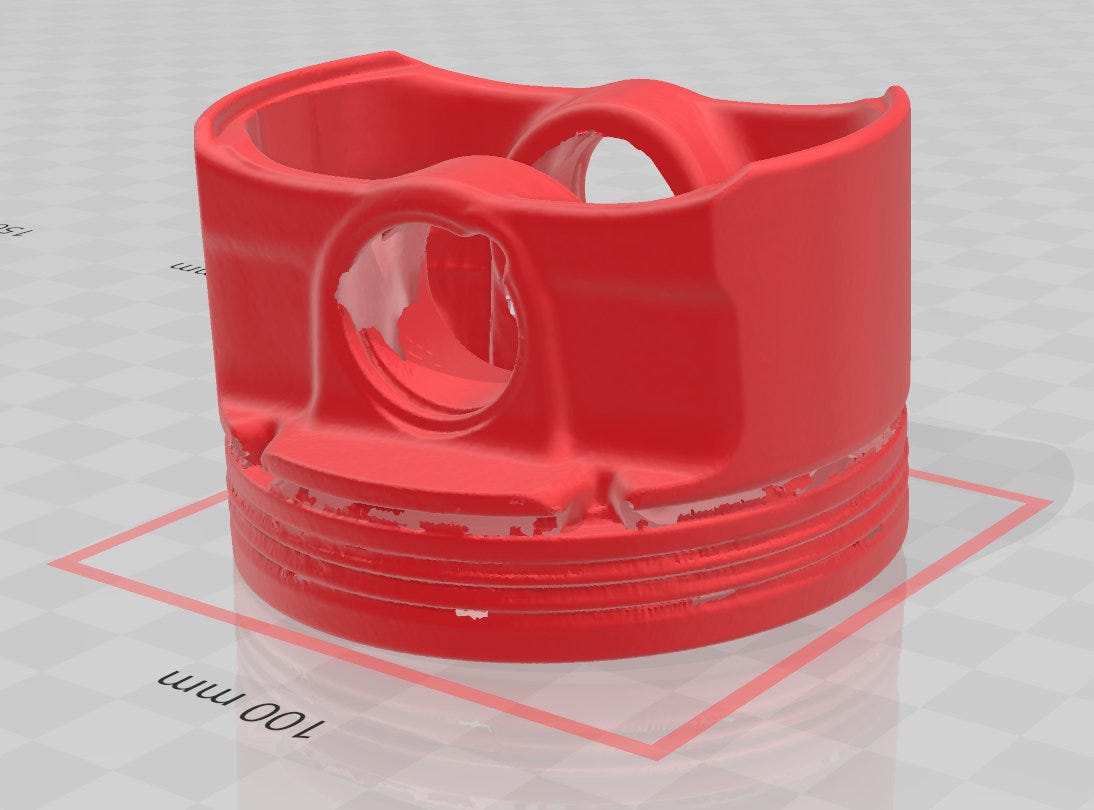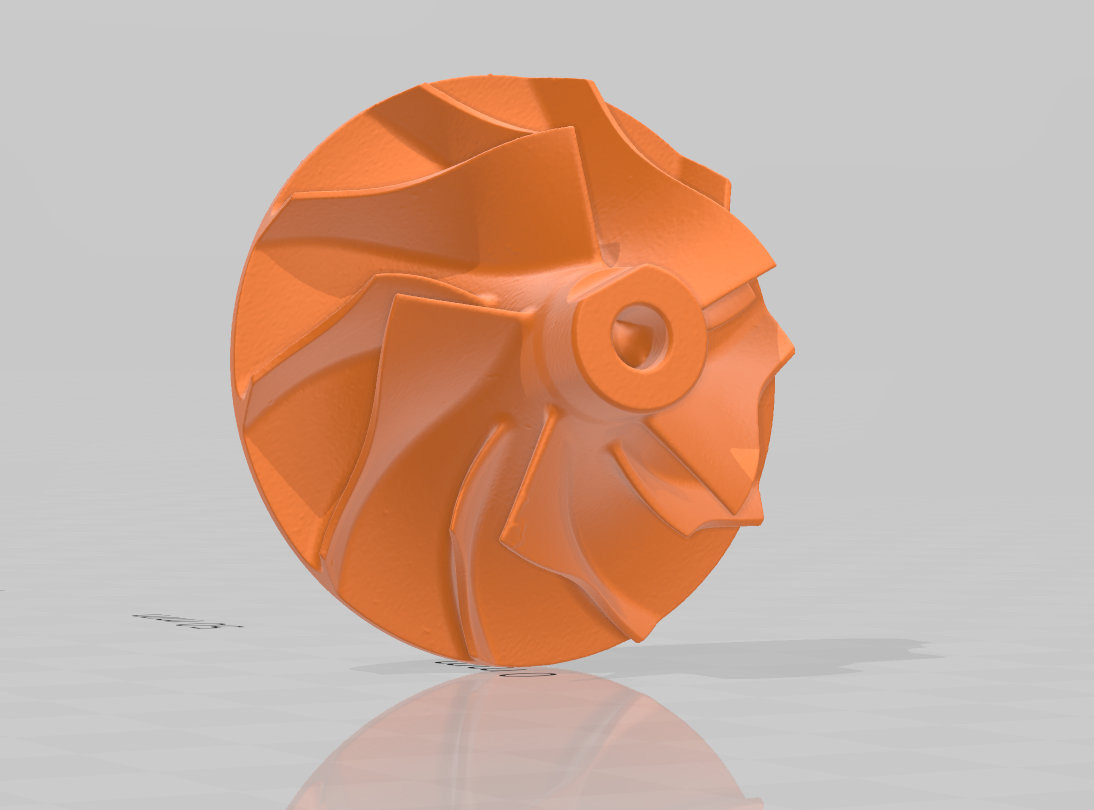Major update from Greg Mark & Backflip AI
The Atomic Layers: S8E5 (00211)
Atomic Layer of the Day:
Yesterday, Greg Mark – former founder and CEO of Markforged – announced a major update for his new project, Backflip AI. And it was a huge reveal! If this works as described, it could be a real revolution.
The new AI model allegedly converts a 3D scan into a parametric CAD model in one click.
I’ll explain why this is such a big deal with a real-life example in a moment. But first, let’s do a quick recap: What is Backflip AI?
Founded in December 2022 by Greg Mark, Backflip AI is a Text-to-STL service aimed at simplifying the 3D part design process. In its first iteration, presented in December 2024, it allowed users to generate 3D models from text descriptions, 2D images, and other models.
I briefly tested it back then, and… it was okay, but nothing groundbreaking.
However, on LinkedIn, X (Twitter), and YouTube, I saw project examples generated with Backflip that looked far more promising. So, things aren’t bad – the model is still learning, and in 2-3 years, it could become a really powerful tool.
But what was revealed yesterday takes things in a completely different direction. The application is now expected to enable fast and easy conversion of raw 3D scans into fully functional CAD files.
How does it work?
A plugin for SOLIDWORKS will be responsible for directly converting scan data into native files while preserving feature history. This will allow users to create parametric CAD models that can be easily modified, while eliminating the need for manual measurement and recreating parts from scratch.
The new Backflip AI feature leverages advanced AI/ML techniques to process 3D data. According to Greg Mark, it offers 60x higher training efficiency, 10x faster inference and 100x greater spatial resolution compared to existing methods.
Why is this such a game-changer?
I’m not sure how many of you have used a 3D scanner before. I’ve had experience with multiple Shining3D Einscan models, both desktop and handheld versions (I even sold quite a few between 2020 and 2021). I also attended numerous client demonstrations of other scanners, ranging from dental scanners with turntables to large-format scanners (Faro) used for scanning rooms or massive objects (e.g., a train wagon).
And here’s what I know: The process of 3D scanning itself is not difficult. The real challenge is processing the scan and converting a mesh cloud into a usable CAD model.
A 3D scan is just a raw starting point – a tool for CAD design and reverse engineering. If you want to manufacture something directly from a scan, it either has to be an extremely simple geometry or you have to accept poor surface quality and dimensional deviations (which is an entirely separate discussion).
A CAD designer must redraw the final part based on the scan. Yes, there are programs that make this easier (like Geomagic), but none of them do the work for you.
Backflip aims to change that. Or at least, start changing it. And to be honest, this makes perfect sense in the AI era – I’m surprised it’s only happening now!
How useful is this in real life? Let me share a story…
Back in 2021, a major automotive parts distributor reached out to me. They had tens of thousands of parts in their catalog. Due to pandemic-related supply chain disruptions, they decided to start manufacturing many of these parts themselves (using various technologies, not just AM).
But to do that, they needed designs. In other words, they needed to scan existing parts.
The parts varied in size – from 2-3 cm to several dozen centimeters. The plan was to use two different 3D scanners – a desktop scanner for small, high-precision scans and a handheld scanner for larger parts.
This was a €50,000+ investment, but for them, the cost wasn’t an issue.
So, what went wrong?
We did a live demonstration, scanning several reference parts. The final results looked great! But… they were completely put off by what came next.
They had no one to process the scanned parts. They assumed raw 3D scans were enough. When we told them they’d need a specialist to convert the scans into CAD models, that was a dealbreaker.
They briefly considered outsourcing the CAD work to us, but with thousands of parts and a tight deadline, it would have required two people working 8-10 hours a day for weeks.
The cost of labor would have far exceeded the cost of the scanners. So, in the end, they scrapped the entire project.
This is exactly what Backflip AI is supposed to solve.
If it really works as Greg Mark promises, this could take manufacturing to an entirely new level. Not just additive manufacturing – manufacturing in general.
Now, I just need to see it in action… How well does it really work?
Atomic Layer from the Past:
03-05-2007: Z Corporation unveiled Zprinter 450.
Join AM World Map and fill your country or region with Additive Manufacturing!
News & Gossip:
CoreTechnologie has released 3D_Evolution Simplifier 4.8 SP1, enhancing automated CAD data preparation for simulations, digital twins, and catalogs. Key updates include rule-based component naming, improved data security by removing internal geometries, and seamless conversion between 36 CAD formats. The software streamlines large assemblies, optimizing workflows for virtual factories and product development.
Two days ago I wrote about Reinforce 3D and hinted, that there is more news to come. And here it is - Reinforce 3D and Bauer Hockey have announced a strategic partnership to enhance sports equipment using CFIP technology. The innovation strengthens and lightens equipment, optimizing athlete performance. The collaboration will also benefit Cascade/Maverik Lacrosse. The partnership aims to launch a new line of CFIP-optimized products in the coming months.
Just so you know... While writing this article, I’m simultaneously negotiating the participation of a very large AM company in our 3D Printing World Guide and AM World Map. I’m negotiating for €50. Yes. That’s where we are now. No one has it easy—not even big AM companies, whose budgets only cover free advertising.








This (Backflip AI) could certainly be a huge leap for the scan-to-cad industry. Data collection is indeed the "easy" part....and we spend a great deal of time with clients demystifying the process of converting a scanned part to a parametric model. I'd rather keep the curtain closed and produce the deliverable they want instead of constantly going through the education process!